Why are we arguing? Conflicts in the world of cryptocurrencies are endless. There are heated debates over a wide range ofissues and trying to find a compromise acceptablefor both sides, practically not undertaken. Interestingly, on opposite sides on different issues we meet the same people. From monetary maximalism and the distribution of wealth to governance and consensus algorithms, issues vary significantly, while opposing groups remain the same. Naturally, this makes the parties an unproductive habit of not listening to each other.
</p>In "Conflict of Views" and "Views of the Elect"political economist and sociologist Thomas Sowell argues that the phenomenon stems from fundamental differences in assumptions about the nature and limitations of systems. These assumptions are rarely consciously acknowledged, but are major factors influencing opinions. Because views are rarely studied but have profound impact, Sowell presents"Conflict of views"as a mechanism for addressing these assumptions.
Having described the fundamental role of these assumptions in shaping our views, we will shed light on the “conflict of views” and the ideological conflicts of cryptocurrency proponents.
We begin our analysis with a description of the basisconflicting views. Further, using this basis, we will explain the conflict of “cryptocurrency” views. Having dealt with this conflict, we will comment on the structure of disputes unfolding in the world of cryptocurrencies, after which we will dive into the main part of our analysis: the study of four episodes, which are vivid examples of the conflict of cryptocurrency views.
Definition of views

To understand the conflict of cryptocurrency views, it is important to first understand what a view is according to Sowell.If in a simple way, then the view is internala sense of how everything should be is a set of assumptions about the limitations and nature of the world, allowing a person to understand (or at least think that he understands) why everything happens this way.Sowell identifies two opposing sets of assumptions, describing them in terms of “bounded” and “unbounded.”
Limited view
At the core of any view is a strong belief or recognition of limitations. Holders of a limited view consider certain realities to be unchangeable:"Deficit, self-interest, human weaknesses, evil". According to a limited view, the onlythe way to improve something comes down to understanding the fundamental laws of nature, and the only way to innovate is to remain in agreement with certain parameters set by these laws.
The limited view recognizes that although Ait may be better than B, it does not matter if A is simply simply impossible to achieve. For example, although it would be great to fly by abolishing gravity, or end a war by abolishing violence, it is simply not possible. With a limited view, concepts such as Smith's invisible hand and Chuang Tzu's spontaneous order, which recognize human limitations and prescribe ideas that transform these restrictions into progress, are consistent.
The limited view welcomes choice bydefining concessions instead of finding solutions. Given the limited options available, the limited view attempts to make the best choice given that there will inevitably remain “unmet needs.” Hence,“Concrete solutions to specific problems are much less important than having and maintaining proper processes for finding concessions and correcting unavoidable errors”.
Unlimited view
Those with an unlimited view are convinced thatthe only limitation to achieving the desired result is a lack of imagination. In this view, the fundamental problems in any system exist only because people are not wise, motivated, creative, or courageous enough: with the right attitude, deficits can be eliminated, human self-interest can be corrected, imperfections can be improved, and evils can be eradicated. Instead of constructing mechanisms that circumvent fundamental limitations, the unrestricted view believes that it is possible to restructure the world in such a way as to eliminate its flaws. Hence,“There is simply no room for unabated views with painful concessions in unlimited views”.
Questions posed in an unlimited view,revolve around how to eliminate certain negative characteristics in an existing situation in order to create a solution. As a result, the choice boils down not to defining concessions, but to finding the perfect solution. With the right innovations, a minimum of sacrifices will have to be made to achieve a specific improvement. In an unlimited view, questions of appropriateness are not of primary importance, since concessions merely reflect different scales of human preferences and circumstances.
In both cases, regardless of assumptions,the desired result is the same. The goal of both views is to achieve the best possible outcome. Since these assumptions play a fundamental role in decision making, there is very rarely agreement on the achievement of desired results. Both views recognize that the world is characterized by unlimited desires, and they believe that there is an optimal way to satisfy these desires.
As the terms “limited” and“Unlimited”, one view (limited) recognizes that we cannot achieve everything that we want, and another (unlimited) claims that our potential is unlimited. Thus, it should not be surprising that these views come to opposite conclusions about how to achieve the desired outcome.
Cryptocurrency Conflict

Bearing in mind this basis, it is easy to see thatmany intellectual differences in the world of cryptocurrencies are based on a conflict of limited and unlimited views. This is a young area with great scope for experimentation and tens of thousands of participants, each with its own goals.
In the absence of mass adoption, participantsresort to rhetoric. In defining this rhetoric, we see a separation between blockchains: is the hypercapitalist “Gorge Gorge” or a society without radical intermediaries inspired by radical markets the ultimate goal of cryptocurrencies (or both)? Even within a single blockchain, rhetoric can be inconsistent, as we observed how rhetoric around Bitcoin and Ethereum changed over time.
This article builds on previous work by Nick Carter and Hasu on the development of Bitcoin's rhetoric.(and similar work by Felipe Pereira on Ethereum). While the researchers focused onless attention was paid to changing rhetoric over time, presenting this development in an appropriate context: is this development simply opportunistic, the result of changes in commercial (and investment) opportunities in the cryptocurrency ecosystem, or does it reflect fundamentally fragmented philosophical orientations?
The most notable distinction made isbetween “monetary” and “technological” cryptocurrencies is a good but incomplete starting point. In our view, the difference isn't one of "Silicon Valley" vs. "Cypherpunk"—many cypherpunks aren't big proponents of basic-level privacy, and many Silicon Valley entrepreneurs are culturally wary“Move fast and break everything”their colleagues. The distinction is more fundamental and reflects limited and unrestricted views of the future of what technology can help create.
Dispute Structure
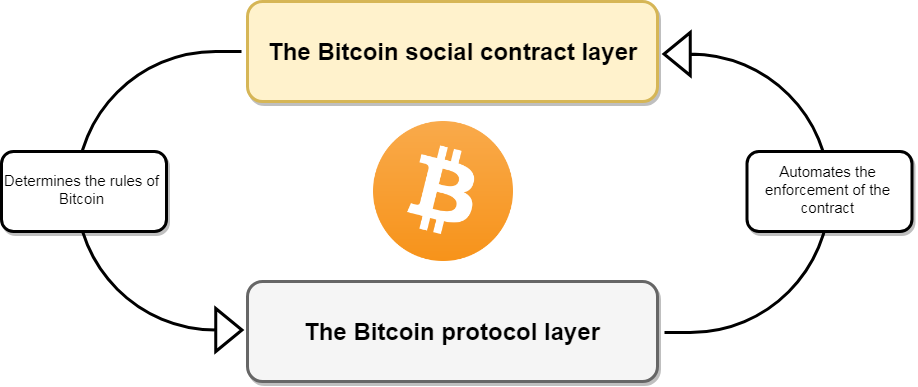
Almost all cryptocurrency disputes occurat the social level. This is no accident, given the nature of the network management models that many public blockchains adhere to, where consensus decisions often set precedents for the future. As a result, in major historical disputes, design is approached carefully and thoughtfully:
- Is a sustainable long-term security model possible with a fixed money supply?(compared to mild or high inflation)?
- How important is programmability and expressiveness, given the increased attack surface and increased security costs?
- Is base-level “absolute” confidentiality worthwhile if it increases the difficulty of verifying the money supply?(or requires more trust from issuers or those responsible for maintaining the system)?
- Is the increase in block size - decreasetransaction commissions and the assumption of linear scaling of costs of full nodes - a short-sighted solution, taking into account the uncertainty of future developments?
These disputes are rarely presented in this way. Instead of presenting ideas as questions or pluses and minuses, discussions - whether in a small chat on Telegram or on the stage at a conference - turn into religious fervor and personal attacks. Cryptocurrency prices serve as a real-time indicator of what rhetoric wins, and owning a particular cryptocurrency generates bias when people promote their interests, instead of providing the discussion with details.
Most discussions come down to replacingarguments by slurred statements. Enthusiasts resort to simple attacks and meaningless rhetoric: the preferred and existing technical properties are "not going anywhere", and the proposed ones are "inevitable." Unpopular existing properties are “obsolete”, and unpopular ambitious offers are “unrealistic”.
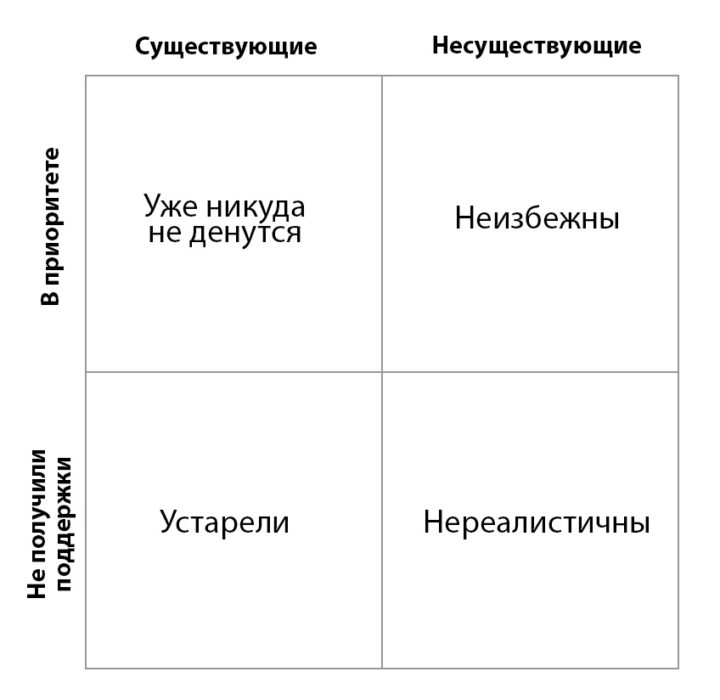
To cut through such empty rhetoric, Sowell advises applying general principles of common sense.(which are nevertheless often ignored)illustrated below:
- All statements are true if the definition of their terms can be freely changed.
- Any statistics can be extrapolated.
- And it can always surpass B if B is not fully appreciated or if A is exaggerated.
- For each expert there is an opposite expert equal to him, but for each fact there is not necessarily an opposite fact equal to him.
- Any policy is successful by fairly low standards and unsuccessful by fairly high standards.
- Most variables can show either an uptrend or a downtrend, depending on the base year selected.
- You can always create a fraction by placing onea variable above and another below, but this does not establish any causal relationship between them and the resulting coefficient is not necessarily related to anything in the real world.
A careful study of Sowell's principles sheds light on the lack of thoughtful consideration in most cryptocurrency discussions.
Episode I: Money Maximalism and Multi-Coin
At first there was only Bitcoin launched by Satoshi,to which, apparently, the establishment was alien. Since Bitcoin strictly focused on providing a new electronic cash system without dependence on a trusted central issuer, the focus of enthusiasts and developers has always been the security of the code base and monetary policy. Historically, changes in Bitcoin have been discussed not only in terms of their merits, but also in terms of their second and third order effects on security.
Bitcoin's original cipher-punk movementdidn't focus on “blockchain technology.” Until today, the majority of “bitcoin maximalists” or “bitcoin minimalists” see Bitcoin as a key tenet of bottom-up design, as opposed to a top-down approach of such projects as Ethereum, Tezos, etc.
Inspired by the ideas of Austrian economists,Bitcoiners have historically favored a "simplistic" and "confrontational" view of the world, rooted in an understanding of monetary history: the "killer proposition" is money, and Bitcoin, a potential contender for the title of global money, has the largest potential target market. From their point of view, other projects trying to create a better Bitcoin and beat it"Fundamental structural constraints"Do not understand its purpose.
What Bitcoiners attack from a historicist standpoint, multicoiners defend from a viewpoint that criticizes this limited, “simplistic” view. Unlimited view believes“A serious lack of imagination (or ordinary observation) that cryptocurrencies can offer nothing but a slow and volatile form of hard money”.
According to such unlimited assumptions, Bitcoin can be described as part of the “calculative era” of cryptocurrencies, as Andreessen Horowitz partner Jess Walden recently explained:
“Many argue that the most important propertydecentralized monetary system is about security, not programmability, and that therefore the limited scripting language is not a bug but a feature. From this point of view, Bitcoin can be viewed more like a calculator rather than a computer.(and positive observation is implied here!). He is specialized and does his job well, but developers who are inclined to experiment and create new applications need evolution to a new architecture. ”
In terms of unlimited views, Bitcoinsuffers from a lack of foresight. Thus, the same property (for example, complex programmability) can be considered a limited view as a bug, and unlimited - as a feature. Sowell explains this difference:
“For carriers of unlimited views, the questionnext: what will eliminate the specific negative features of the current situation in order to create a solution? Carriers of a tragic view ask: what should be sacrificed for the sake of this improvement? ”

On the other hand, forthere is no limited view, but only concessions. Bitcoin developers like Jimmy Song,argue that blockchain technology is accompanied by significant concessions, ranging from high development and support costs to the difficulty of coordinating complex incentives from multiple parties. Bitcoiners believe that proponents of the widespread use of blockchains and “tokenization” lose sight of the main thing: with the hammer of a distributed registry, any motivation problem seems like a nail.

Many Silicon Valley investors have historicallyThey considered the creation of new markets a killer application of blockchains, and Naval Ravikant noted that blockchains could replace networks with markets. Pantera Capital investment director Joey Krug believes that the abolition of traditional company mediation is a key part of his thesis “blockchain technology”, suggesting that in their strongest form, blockchains can create markets in industries that are far from financial services, in the process significantly crowding out traditional businesses:
“Blockchain technology is good for multilateralmarkets - in particular for finance. Other applications that actually come close to financial markets include file storage markets such as Filecoin; computing markets; virtual goods markets in video games; domain name services such as Handshake; betting and gambling services such as FunFair; and communication protocols such as Origin. These projects will provide the classic game of abolishing middlemen: crowding out existing corporations chasing profits and replacing them with software. Just as software engulfs the world, one software engulfs another. ”
Silicon Valley predisposition tounlimited view is obvious. When software is called paramount in networks like Bitcoin, the role of a technologist is superior to that of an economist. As a result, blockchain is simply becoming one of many new platforms in the ever-evolving Internet infrastructure (Web 3.0). In the article “What follows after open source?” Denis Nazarov from Andreessen Horowitz elegantly describes this point of view:
“States developed over many yearsinnovative companies, provided incredibly useful services (search, maps, social networks, commerce), but further combinatorial innovations are closed to external developers and entrepreneurs. To recreate services from scratch under the same conditions and at such a late stage is a hopeless undertaking. As cryptocurrency networks evolve, they can create strong motivation to open access to new states and create open services in many areas where closed ones dominate today. Open services based on cryptocurrency networks will provide a new generation of developers and entrepreneurs with an unprecedented opportunity for innovation. ”
Word usage
Describing the potential of blockchain technology,technologists deny current constraints and demonstrate a predisposition to technological progress. Misunderstanding of this view is often attributed to the lack of imagination of the “doubters”. Who saw the potential of the Internet in 1995, given the infancy of its architecture, or the surge in mobile applications that transformed the world, given the limited capabilities of the first iPhone? Sowell explains:
“Insoluble problems with painful concessionsthere is simply no place for unlimited views. Problems exist only because other people are not so wise, interested, creative or courageous as carriers of unlimited views. ”
This is noticeable even in the choice of words by representatives of the unlimited view. Sowell notes that“The vocabulary of carriers of unlimited views is full of words reflecting the denial of constant concessions and the defense of categorical decisions”.
More generally, word usage reflects a person's views. Term“Shitcoin minimalist”indicates a limited view of the potential of blockchain-based solutions to human problems.
Bitcoin Maximalism, in turn, is an disapproving term,invented by Vitalik Buterin, who created Ethereum after categorically rejecting his proposals to significantly expand the available capabilities of Bitcoin. Since then, the term has been actively used, and as Vitalik noted:
“I really wish evil * Bitcoin maximalism *, but only because bitcoin maximalism as an ideology craves the disappearance of all platforms except Bitcoin.”
2. I do wish ill on * bitcoin maximalism *, but only because bitcoin maximalism as an ideology seeks elimination of all non-bitcoin platforms
— Vitalik Non-giver of Ether (@VitalikButerin) June 15, 2017
Although the term was borrowed by bitcoin forReflecting a descriptive monetarist view, rather than a descriptive ideology, it is still used by multi-coiners to refute the claims of bitcoiners. Moreover, Vitalik, explaining his point of view, even used the word "limit":
“I consider the maximalism of a single coinan oligarchic mercenary ideology that seriously limits the possibilities of cryptocurrency innovations and makes them dependent on the political process (managing Bitcoin) instead of market competition. ”
Sowell anticipates this conflict in his work, explaining that“Those who consider themselves chosen often hang up on others enduring labels based on transient circumstances”to strengthen one’s position as a victim of injustice and strengthen the dynamics“We are against them”. These labels are of no use: the interests of several “toxic” bitcoiners do not reflect the views of most bitcoin holders who are not even aware of the nuances of cryptocurrency online discussions.
Bitcoiners also criticize unlimitedview, referring to separation from science. Even the most ardent proponents of unlimited views recognize the gap between the realities of today's technology and those that are seen in the future, and Walden notes:
“How exactly this will work - in largedegrees are an issue of open research. Proponents of the “server era” architecture argue that the experience of the “cloud era” will arise through standardization and abstracting of communication between heterogeneous blockchains. Others, like Ethereum 2.0 (Serenity) and Dfinity, converge on sharding versions of homogeneous, Turing-complete blockchains. Others are exploring completely new architectures that translate offchain computing. ”
Through the prism of technological utopianism or“Nirvana's misconceptions” expediency is a secondary consideration to start with a portfolio of diversified rates — a venture capital model — and not by exploring the pros and cons in the space of structural parameters.
Episode II: "Justice" of the distribution of cryptocurrencies
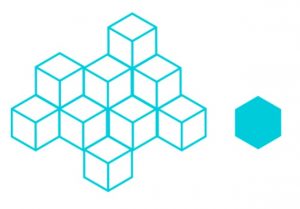
From the very beginning of the discussion on “justice”The various cryptocurrencies have sparked a heated discussion of what the future distribution of wealth should look like. This is expected - if cryptocurrencies fully realize the cipher-bank vision of the future, then this will be one of the greatest redistributions of wealth in history. Since discussions about current income inequality predominate in global rhetoric, the possibility that cryptocurrencies will exacerbate existing problems is haunting many.
Over the years, many attempts have been madeevaluate inequality, including Balaji Srinivasan's work analyzing Gini coefficients for different networks. Similar studies have outraged both cryptocurrency enthusiasts and external critics.
Additionally, New York University professor and prominent cryptocurrency critic Nouriel Roubini notes that“The BTC inequality rate is worse than in North Korea, where there is the worst inequality on Earth”.
Decentralization is a myth:miners, exchanges, developers are centralized (Buterin is "dictator for life" ) & the inequality coefficient of BTC is worse than North Korea that has the worst inequality on earth. Crypto beats Kim Un Jung in regards to centralization & inequality
— Nouriel Roubini (@Nouriel) October 8, 2018
This conflict is another example of friction betweenthe limited view of bitcoiners convinced of the futility of trying to design an “ideal” distribution of wealth, and critics who believe that bitcoiners received an “unfair” reward as early users. Proponents of a limited view argue that Bitcoin’s goal is to offer a non-government monetary alternative - in particular, money that is not subject to confiscation and depreciation - and that the distribution of bitcoins is ideally adjusted by the free market, which rewards investors depending on their position on the risk curve. Some also argue that, given empirical observations of changes in ownership concentration with changing market cycles, concern about the distribution is unnecessary - free markets solve this problem.
Whereas carriers of unlimited viewsproject their desire for a certain distribution of wealth in society, a limited view explains that this contradicts Bitcoin's only goal - to prevent the forced redistribution of wealth. Soell, again, thoughtfully comments on wealth inequality in practice:
“If someone believes that the origin of income andwealth should not be as it is now, but instead they should be distributed as a gift from a certain central point, then such an argument should be put forward openly, clearly and honestly. But to say that now we have some result of distribution A, which should be changed to the result of distribution B, means to incorrectly formulate the question and pass off radical institutional changes as a simple adjustment of preferences. The word "distribution", of course, can be used in more than one sense ... In fact, it is argued that the numbers seem to be [carriers of unlimited views] wrong - and that this is important, that all the countless goals of millions of people interacting with each other in the market , should be subordinate to the purpose of presenting to observers [adhering to an unlimited view] a specific statistical table. ”
Despite this, the conflict of views does not go away. More ambitious experiments are being proposed, including attempts to create“Basic basic income through mass airdrop”or alternative monetary systems to Bitcoin,where long-term accumulation of wealth would be prevented. Proponents of the limited view contrast these forms of idealism with practicality: despite good intentions, early versions of such systems are often naively designed and ignore the second- or third-order effects of top-down stimulus manipulation. In many cases, such policies can end up harming those they are trying to help by creating distorted incentives that exacerbate existing inequalities.
Episode III: Management

Images: BitNews
The metaproblem of open source protocol management is a long-running dispute, where one can also find the line of split between a limited and unlimited view.
Limited view considers optimalmanagement is achieved through a bottom-up approach, trying to minimize subjectivity and the need for trust, while an unlimited view believes that optimal management is achieved through a formalized onchain approach that interacts with existing legal norms that operate on a top-down basis.
Theoretical model of “wet” and “dry” codeNika Szabo provides an additional illustration of the nature of these conflicting views. At the highest level, a “wet” code is interpreted by a person, and a “dry” one is interpreted by a computer. Examples of wet code are laws and traditional contracts. Examples of dry code are smart contracts, protected property rights, and a domain name system. The human language is somewhere in the middle between wet and dry code: if, for example, a computer program can translate text into many languages, then the human language can be considered dry.
The difference between wet and dry code raisesquestions about the extent to which formalization of management is possible without the influence of human subjectivity. If a wet code is, by definition, human-readable and dry-computer-readable, then, according to a limited view, turning a wet legal system into a dry code will not only add additional complexity, but also introduce elements of human subjectivity.
Since all the subtleties of law and governance are complexand unknowable, a limited view is opposed to a fully formalized onchain management: the implementation of the "law in the form of a code" becomes extremely subjective and unable to take into account all the unpredictable changes in the real world.
Since the avoidance of human subjectivity andminimizing the need for trust is the main priority of the limited view, “law as code” becomes unattractive. As Bitcoin Core developer Matt Corallo points out,“The absence of the need for trust means the ability to use Bitcoin, trusting only open source software”. The limited view postulates thata formalized management system that adds unbreakable subjectivity to open source software is possible only due to automated immutability and the absence of the need for trust.
With formalized on-chain management, changes indry code is completely arbitrary - and a limited view avoids such a reality, putting in the first place a critical approach to the process. As Sowell writes:
"For representatives of the views of the elect, the questiononly to choose the best solution, while for proponents of a tragic view the more fundamental question is: who should choose, and through what process and with what consequences if the decision is wrong? ”
A formal software management system is created fromimplementations in dry code of what is essentially a wet code. As a result, the control and trust of software transfers to people. According to an unlimited view, people should be able to constantly change the implementation of the network, since people are the ultimate judges. Therefore, this view objects to the subjective assertion that minimizing trust through software automation is optimal, refusing to accept such a statement as “law”.
In practice, according to a limited view,automated control is limited to a set of verification rules, as can be observed in the Bitcoin management model. In case of failure in the wet code process, the system will resort to fork - a protocol change that affects the validity of the set of rules. Since forks for unlimited views are bugs, the value proposition of the on-chain management system is precisely that it avoids forks and welcomes the high update ability. Nevertheless, with formalized management, the risk of fork in the implementation, which seemed ideal, can potentially speak about the subjective nature of the implementation. A limited view postulates that this is detrimental to the long-term viability of the protocol.
Episode IV: Proof of Work Versus Proof of Ownership
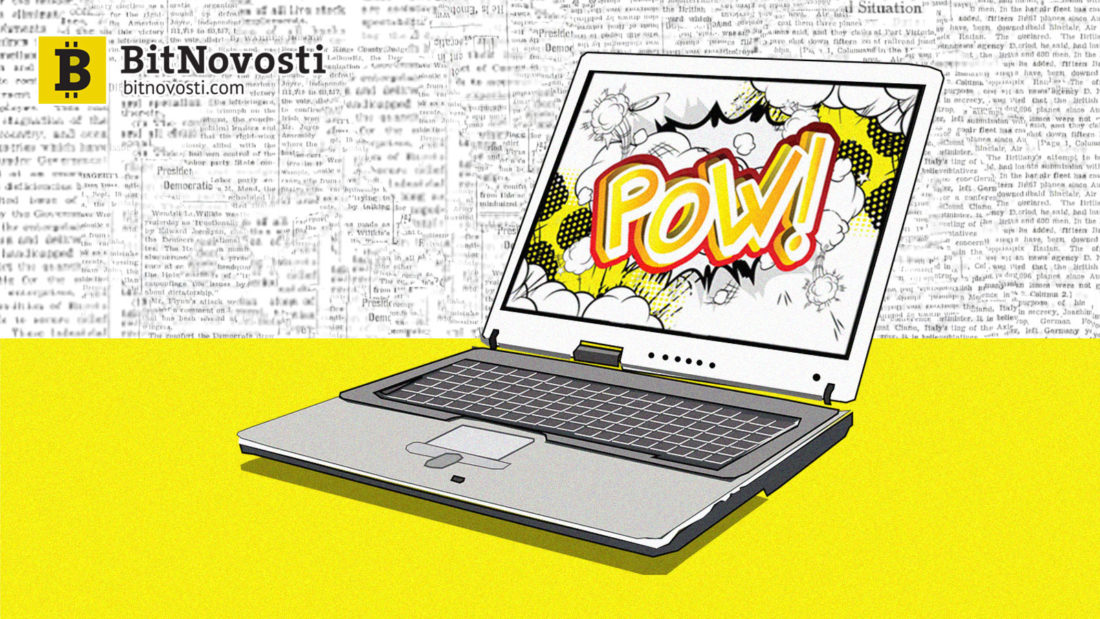
Images: BitNews
Bitcoin proof of accomplishment ispersonification of a limited view, a mechanism for circumventing fundamental restrictions instead of redrawing them. As explained in Nick Szabo’s article, Money, Blockchains, and Social Scalability, Bitcoin’s proof of accomplishment adapts to our cognitive limitations and behavioral inclinations, making a necessary and conscious concession: substantially sacrificing computational scalability for social scalability.
Feature for limited view - a bug for unlimited
Ability to participate in the “institutionalTechnologies ”is based on motivation by technology for participation and protection of the system and its participants from malicious activity. Thanks to improved social scalability, which effectively makes proof of work, the number of people able to participate in the system profitably is maximized. Thus, the limited view, the view of proof of work, postulates that the success of Bitcoin should not be determined by computational efficiency, but by the ability to increase social scalability by minimizing trust.
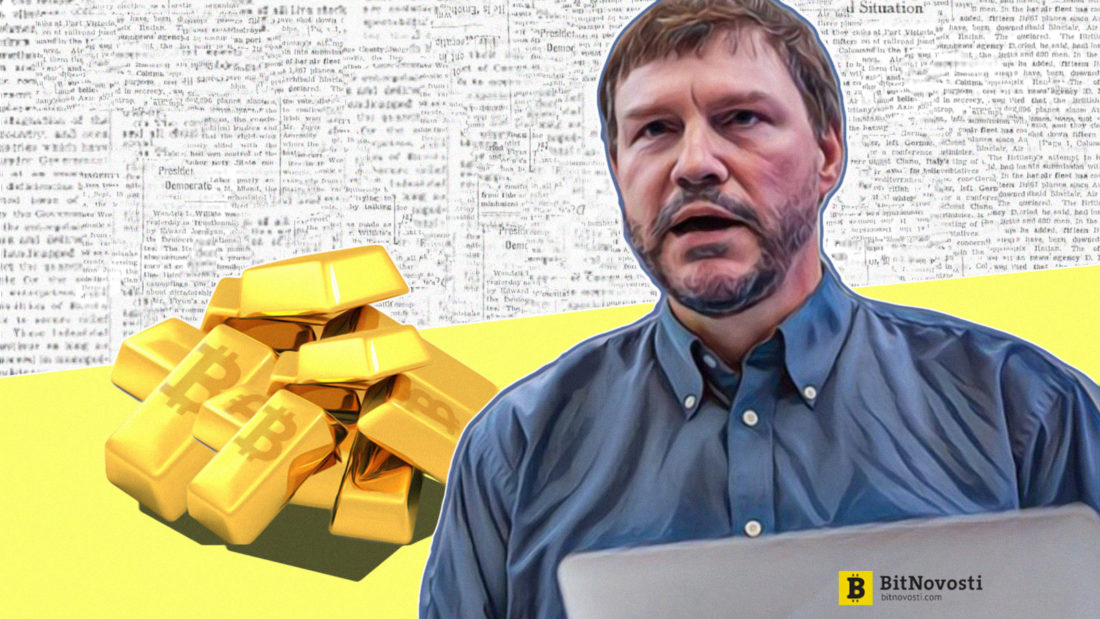
Images: BitNews
What the unlimited view considers computationally inefficient and non-scalable, the limited view considers not only an intentional concession, but also a fundamental characteristic:specialized equipmentmustperform a function whose only result is proof that the computer actually performed the expensive calculation. As Nick Szabo points out,“Copious resource consumption and poor computational scalability enable the security necessary for independent, organically global, and automated immutability”.
Although the optimal implementation iscomputational, and social scalability, a limited view recognizes that this is not possible without sacrificing security. Computer science has a fundamental understanding of the inevitable trade-offs in security and performance when automating immutability requires high resource consumption. Even with all the breakthroughs in computer science, the limited view recognizes that complete immutability and the absolute absence of the need for trust are not feasible, which makes explicit and conscious concessions all the more imperative. Consequently, the limited view fully recognizes that such concessions are inevitable and that“Probably a substantial and at the same time, unchanging performance improvement is impossible”.
For an unlimited view of assumption,related to proof of completion, completely different. Rather than claiming proof of work sacrifices computational efficiency for social scalability, an unlimited view argues that proof of work unnecessarily consumes significantly more resources than it creates, making it an uneconomical and outdated system that needs to be improved.
Unlimited View is often used toIllustration of the “wastefulness” of proof of work is an indicator of the ratio of the amount of energy consumed by the system to the total volume of processed transactions. Using this metric, it becomes obvious why, according to the unrestricted view, proof of work is so grossly ineffective:“Bitcoin consumes energy equal to five Hiroshima explosions daily.”, processing“Only a small part of what payment services like Visa process”.
"Bitcoin consumes 5 Hiroshima's worth of energy per day" — Toufi Saliba, CEO TODA
— Emin Gün Sirer (@el33th4xor) October 25, 2018
Using this argument to illustratethe wastefulness of proof of work implies that trust minimization is not seen as a necessary property by the unconstrained view. Otherwise, comparing Bitcoin to Visa would be meaningless:Visa does not provide the same improvements in social scalability by minimizing trust just because it is more "computationally efficient". Such a comparison not only misses the existence of limitations, but also attempts to associate two completely unrelated variables(i.e. energy consumption and transaction volume are not functions of each other). As Sowell emphasizes, the erroneous association of these variables leads to“Statistical extrapolation without any analysis of the real processes from which these figures are taken”.
Cost-free alternative?

If proof of workwasteful, that means there must be a cheaper and prudent alternative. From an unrestricted perspective, the reason why the proof of work is not completely inferior to the alternative is either inadequate concern for the environment or inability to imagine future technological progress, as Emin Gan Sirer suggests:
“In 100 years, future generations will talk aboutthe madness of the proof of doing the work with the same puzzles that we experience in relation to other mass mania. The absurdity of wasting energy to write to the electronic registry will become more apparent. We will look at it the same way we look at the use of chlorofluorocarbons and leaded gasoline. We will replace this with systems that work better. "
As already emphasized, unlimited viewsseeks to eliminate certain negative characteristics in the current situation in order to create a solution. Thus, in the context of proof of work, an unlimited view poses the following question: how can the computational inefficiency and energy waste of proof of work be eliminated in order to create a better mechanism that is resistant to Sibyl attacks and a consensus algorithm?
When trying to answer this question, mechanisms arose such as proof of ownership, the most popular solution. The creator of Ethereum Vitalik Buterin emphasizes:
“The philosophy of proof of ownership does not look like“ security is provided by burning energy ”, but as“ security is ensured by putting economic value on the line. ”
In a system with proof of ownershipthe blockchain agrees to add new blocks through a process in which anyone with system coins can participate, and its influence is proportional to the number of coins (or “ownership share”). This is a much more effective alternative to mining proof of work, which allows blockchains to function without the high costs of equipment and electricity inherent in mining. ”
According to unlimited views,proof of completion is classified solely as a defense against Sibyl attacks. Consequently, the elimination of energy consumption for the creation of coins is more justified.
Thus, the goal of unlimited view isimplement an inherently cost-free system without losses. When using proof of stake, network participants do not need to use exorbitant amounts of energy to maintain the immutability of the ledger, which significantly reduces labor intensity. Reducing labor intensity is more equitable and promotes community participation due to lower barriers to entry. In particular, the unrestricted view argues that denying entities with access to vast quantities of cheap energy the ability to mine will promote an equal redistribution of work and lead to a more democratic system. Once the property that guarantees security in a proof-of-work system is removed, security in turn is based on the value stored within the system itself. As David Yakira notes,“The proof of ownership system is in some ways recursive, since an increase in the value stored in it implies an improvement in security, which allows the cost to grow, etc.”.
However, according to the limited view,defining proof of work as just a mechanism to defend against Sybil attacks is not exhaustive and simplifies its task. Proof of work is also considered important to maintain genuine value,“Giving digital blocks weight in the real world”and providing a predictable, meritocratic distribution mechanism.
Because the limited view believes that“There are no decisions, there are only concessions”, a lossless mechanism without losses is also by definition impossible, as Paul Storz notes:
“Transfer payment trigger to social orthe political dimension will simply transfer the costs of work, respectively, to bribery and propaganda. If something has value, people will spend the effort to get it, up to its value. These efforts are also “work”. Thus, a stable solution to these problems is by definition impossible, and there is always a motivation to work until marginal costs are equal to marginal revenue. ”
The future remains to be built
As we have emphasized, differences of opinion betweencryptocurrency enthusiasts, investors and developers can be viewed in the coordinate system of “unlimited” and “limited” views - two conflicting ideologies that are not tied to geography, professional affiliation or experience.
We believe that the most likely outcome afterof all possible actualizations of these views is their rapprochement in one form or another. Although the future remains uncertain, a conflict of views exists because in reality views are the only things we can focus on, having only a concept of development in terms of adoption and integration for the coming decades.
The prevailing views of a limited view are notare mutually exclusive with a more abstract unlimited view. While the battle of currencies continues on the surface, their main goal (elimination of intermediaries) is common. Although differences are visible with a narrow focus, goals converge at the highest level. The cipher banks who care about privacy want to see the destruction of advertising-driven technological monopolies, and Bitcoin remains a useful weapon against tyrants regardless of political, social or religious affiliation. Although accepting cryptocurrencies seems like a zero-sum game, open source is based on experimentation that expands the size of the jackpot and attracts new participants to the market with different views, while at the same time checking existing implementations.
Perhaps when creating global money, the topcan be taken only by a strictly limited, focused point of view, since the launch of a system resembling a Swiss bank in your pocket requires appropriate care. If blockchains really represent a significant milestone in the evolution of computing, then these systems can follow an evolutionary philosophy closer to traditional software with its cyclical releases of new versions.
These disputes, in retrospect, will resembleearly debates about the ideal Internet protocol standard or about intranets and the Internet, or even older debates about the viability of other monetary metals compared to gold. Ultimately, the winners of the current conflict of views will say:“How did we not foresee this?”
In the meantime, the future has yet to be built.
</p>




